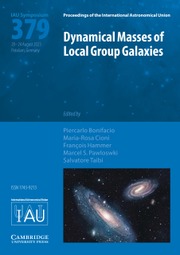No CrossRef data available.
Article contents
Stellar wind from low-mass main-sequence stars: an overview of theoretical models
Published online by Cambridge University Press: 16 August 2023
Abstract
The stellar wind from low-mass stars affects the evolution of the whole stellar system in various ways. To better describe its quantitative contributions, we need to understand the theoretical aspects of stellar wind formation. Here, we present an overview of the theoretical models of stellar wind. The classical thermally-driven wind model fails in reproducing the anti-correlation between the coronal temperature and wind speed observed in the solar wind, thus needs modification with magnetic-energy injection. Specifically, energy input by Alfvén wave is likely to be important. Indeed, a number of solar-wind observations are well reproduced by the Alfvén-wave models, although it could be risky to directly apply the Alfvén-wave models to general low-mass stars. For a better description of stellar wind from low-mass stars with a variety of activity levels, the hybrid model would be better, in which we consider the effect of flux emergence as well as Alfvén wave.
- Type
- Contributed Paper
- Information
- Proceedings of the International Astronomical Union , Volume 17 , Symposium S370: Winds of Stars and Exoplanets , August 2021 , pp. 122 - 129
- Copyright
- © The Author(s), 2023. Published by Cambridge University Press on behalf of International Astronomical Union



